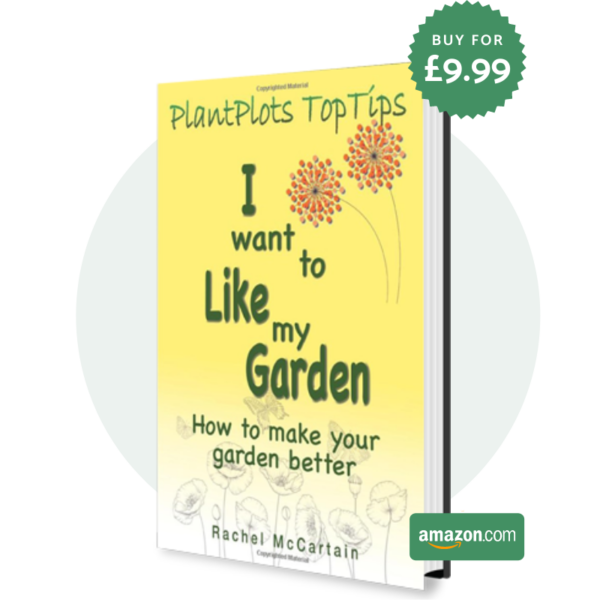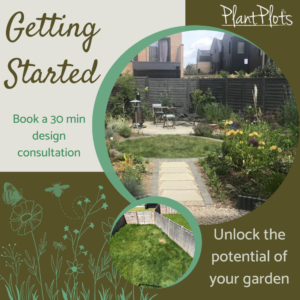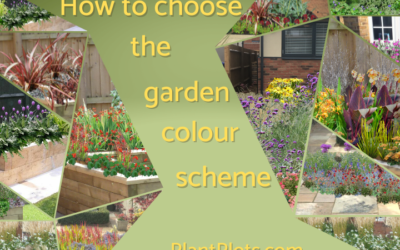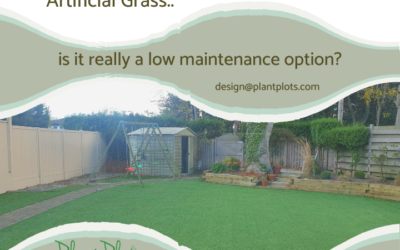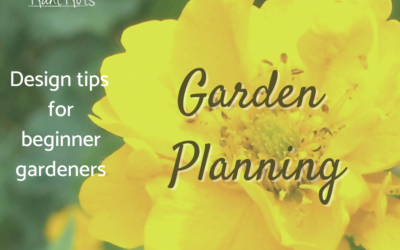
How to hide ugly garden features
Wouldn’t it be lovely if every part of the garden looked lovely, but sadly this is not the norm. Most gardens have an unloved area, a part of the garden you wished wasn’t there or an immovable feature that is just downright ugly. The trouble is as modern gardens are so much smaller, the ugly bits become even more noticeable. So here are some easy design tips and tricks to help hide ugly garden features such as paths, walls and fences!
Distraction – you can’t hide ugly objects in a small space. You just need to make them less noticeable.
Every garden has its bad bit, the problem arises when the bad bits become THE garden feature. So how do you reduce the negative visual impact?
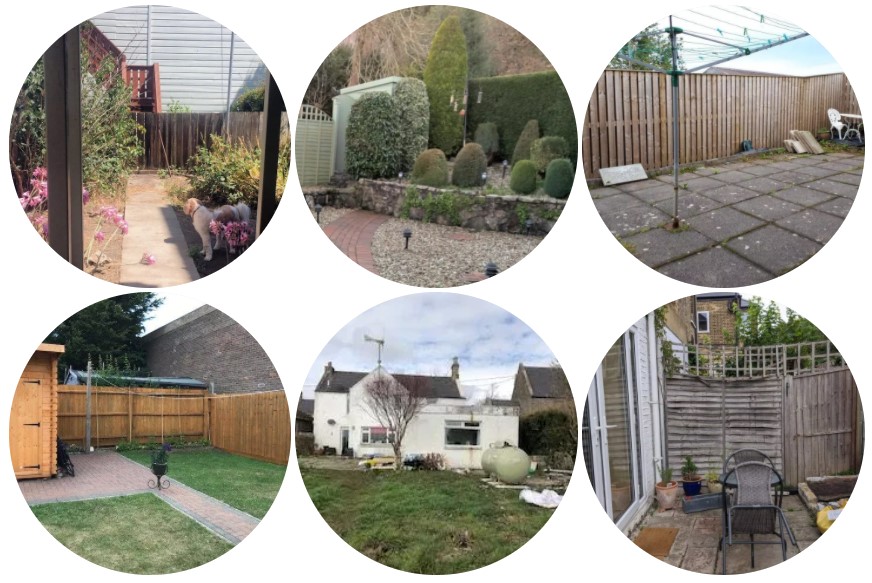
With all these images, there is one common problem, one missing element that means all you end up looking at is the unattractive features. These could be concrete paths, bland paving slabs or lots of fence panels. So what is the missing element?
A ‘Look at Me Instead’ feature!
The problem with hiding large unattractive features is, what is doing the hiding has to be large as well. You simply replace one ugly element with a larger less ugly one.

Does adding a green ‘wall’ make the ugly less ugly? All that is accomplished is more attention is drawn to the one part you don’t want to notice. It becomes more noticeable because it is trying to hide something. Curiosity though, makes us look for the element that is hidden away.
A different approach is needed.
Distraction Technique Number 1 – Add something unexpected.
This is all about creating an ‘oooh what’s that’ or an ‘oh, that’s a clever idea’ response. Add something to the ugliness that is so totally different, it takes over from the ugliness behind it. And the best part is that this can be anything YOU LIKE!
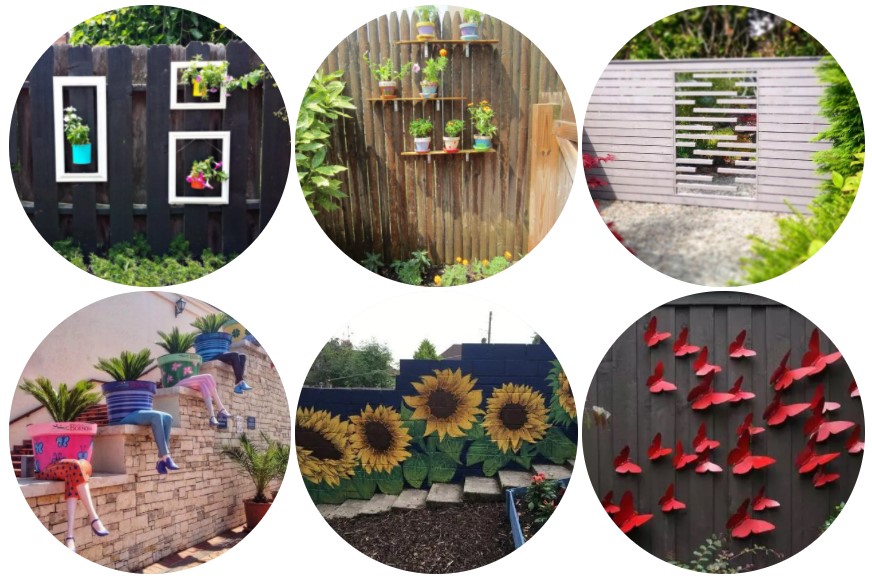
Distraction Technique Number 2 – Make a big bold feature elsewhere
Now, this may seem blindingly obvious, but in a small garden, one big tall bright bold border or feature will shout and demand your attention. This is especially the case if you can add movement to the garden also. We watch things that move more than we watch things that don’t.
captivating isn’t it.?
Distraction Technique Number 3 – Make a place you can immerse yourself – entirely
If it is not possible to change the eyesore, perhaps because it is not in your garden or owned by you, then the next best option is immersion. Create a sanctuary area in the garden to retreat into but once ‘inside’ all your senses are activated. It’s not just sight, you need to think about touch, taste, hearing and scent as well. Scent is probably one one the best distraction methods available. Smell evokes memories and to tap into our memories, we often close our eyes – so you then won’t be even looking at the unattractive parts of the garden.
Imaging sitting in a small trellis covered bench, with plants to eat, surrounded by scented foliage. Maybe just in front of you is a small wind sculpture spinning gently in the breeze or you have a butterfly feeding station – you will automatically become engaged and interested in what is around you.
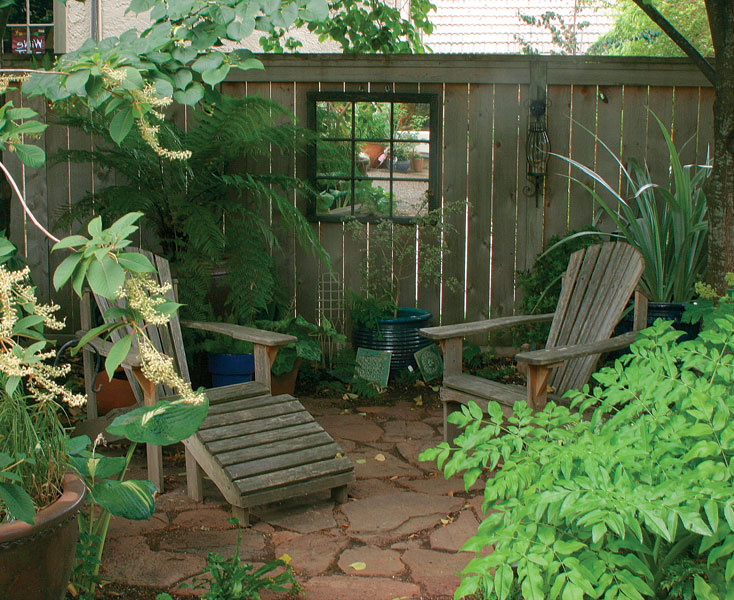
All you need is one small space that is just for you, where the world is ‘outside’ and you are surrounded by the things that make you happy.
So it’s all about language, if we stop trying to ‘hide ugly features’ and instead think of ways distract ourselves – we open up a world of interesting options.
Hiding the neighbour’s ugly garden wall
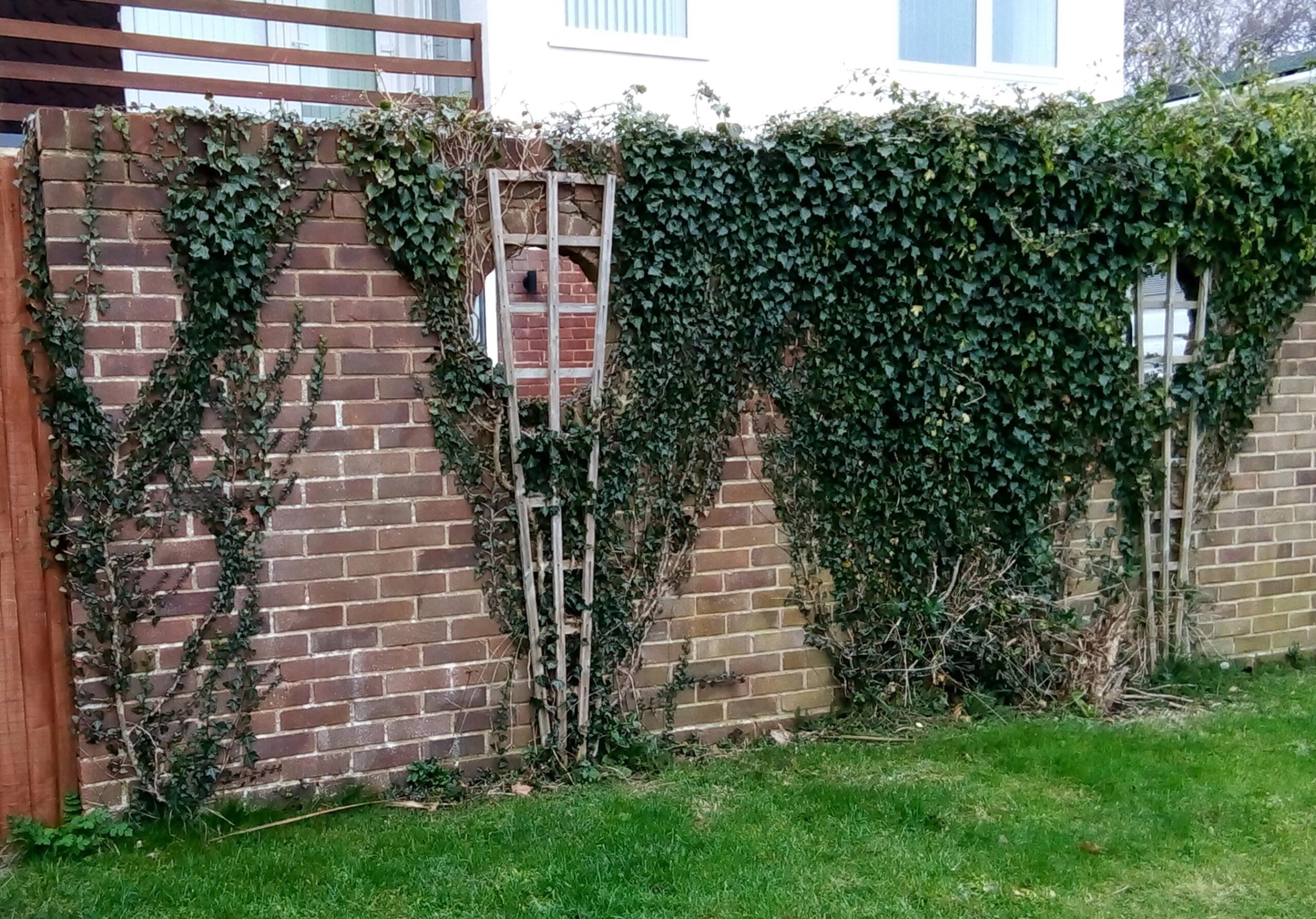
Whilst it would be lovely to look out of the window and see a beautiful view, the reality is that normally it’s not quite so stunning!
The remedy for many people is to plant a big dense green hedge to disguise the ugly view. The problem is that you get a dull view instead!
So let’s think a little differently, as most of you will probably already have the hedge or fence, you need to concentrate on making that more interesting. Consequently, you will not notice the hedge or the ‘neighbour’s ugly bits’ so much.
Similarly, you need to distract the eye from ugly images, by adding something interesting to look at. In the picture above, all you really notice is how tall the neighbour’s house is!
To counteract this, and to bring your eye line down to the stuff you want to notice. So now some trellis has been added that sits above the wall, climbers can then be planted to soften the harshness and dominance of the wall.
Tall planters try to re-balance the view (less brick wall, more nice wall), and then the planting is really quite bright and bold, so hopefully, you notice this much more than the house behind.
You may think why not a tree there, well, a tree tall enough to hide the wall will have roots big enough to crack the walls too – it would be too close to foundations and thus not advisable.
Hiding the neighbour’s ugly garden then involves one basic principle.
Don’t try to hide it, create a ‘look at me instead’ part of the garden. Simple eh?
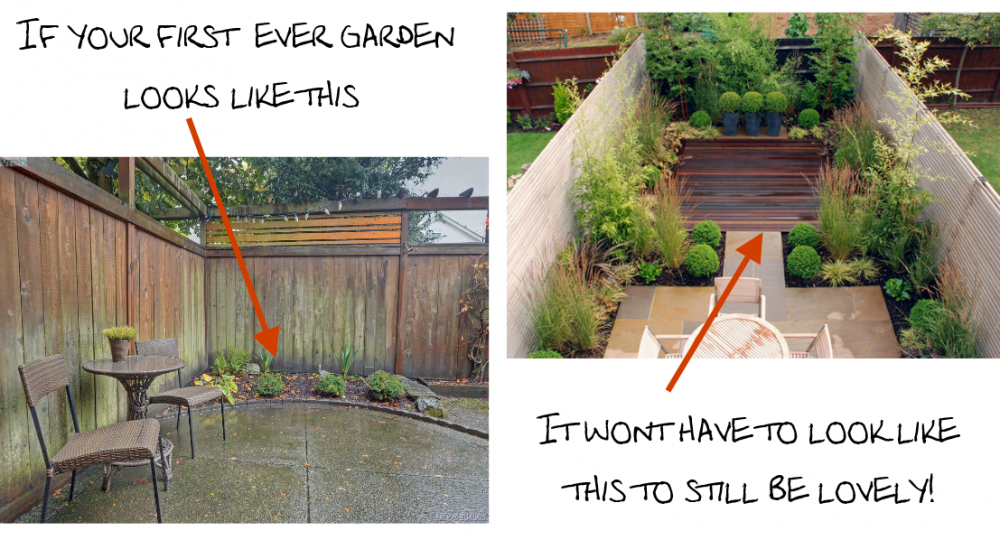
Plan your view.
Take a chair into the garden and sit down. Shut your eyes and open them again – what’s the first thing that catches your eye. Repeat this by moving the chair to face different angles in the garden.
You will now have a plan of ‘first impressions’ in the garden, some of which will be good and some not so good. So what to do now….
If the bits you would rather not see are impossible to exlcude from view, then the simplest solution is to turn your back on them. If you sit down facing away from the eyesore, you can look at something nicer.
Then with the orientation of your seating area sorted, you can create an area of the garden that is really good to look at. In this way, you control what you want to see.
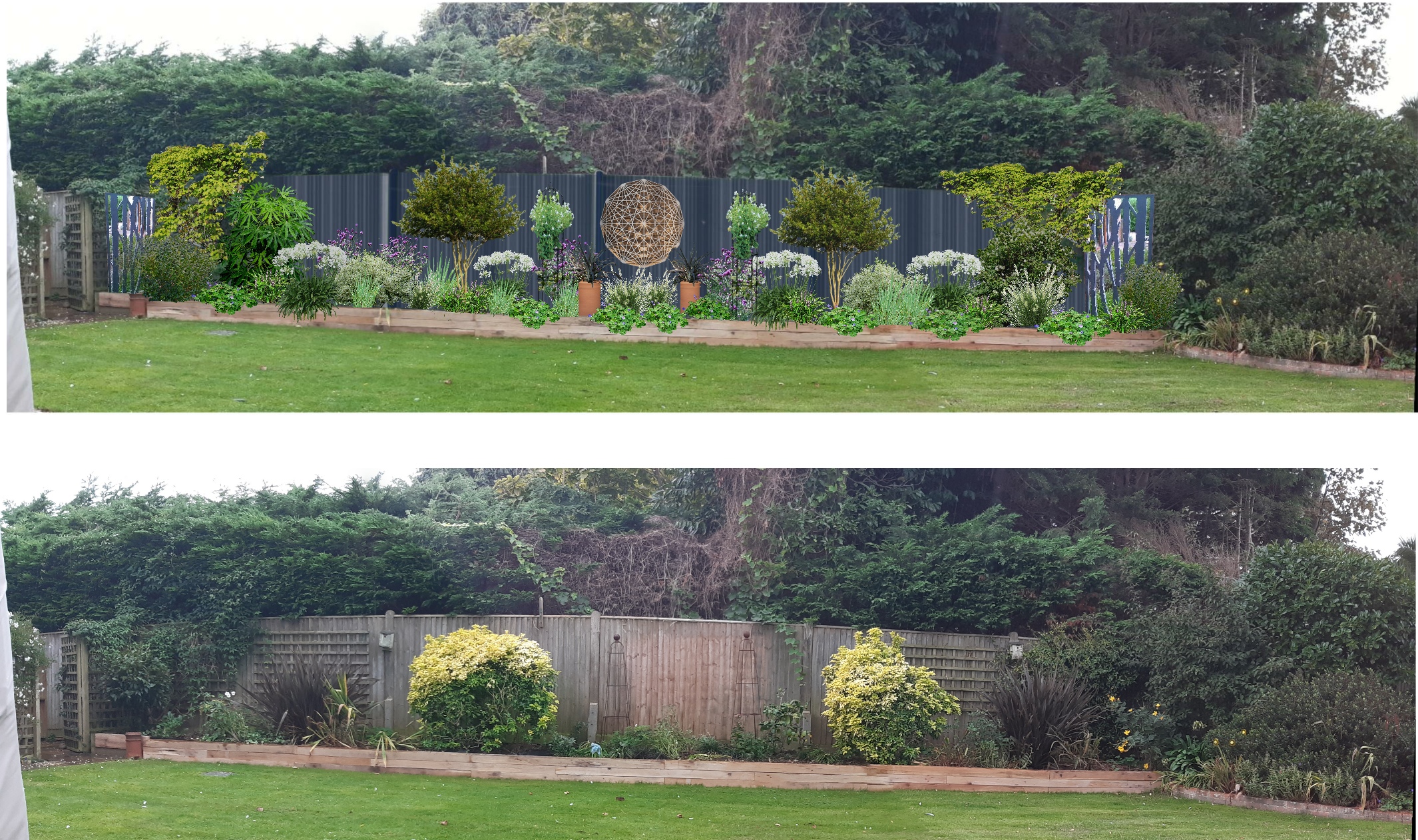
Gardens can be made less ugly and more interesting with a little thought, as long as you concentrate on distracting your eye so that it doesn’t stay looking at the ugly bit because it has a more attractive bit to look at.
Hide a Path in Plain Sight:
One of the main problems in small garden design is how to deal with paths. Paths by definition have to go somewhere, they need to be hard-wearing and they need to be a certain width to be able to walk down comfortably. The problem arises as garden sizes shrink, the path becomes a much more visually dominant feature and as paths have to be practical they are often not pretty!
To lessen the impact of the path and make the garden look more interesting you need to make something else much more interesting.
So what do you do if like many gardens, you already have a path and you don’t want to go through the expense of changing it. There are lots of ways to make the path appear less obvious, and it’s all about making your eye notice other things more.
Create a False Entrance:
If changing or re-siting the path is not an option, what can you do?
A simple but cheap option is to create a false entrance. The border alongside the garden can be planted with really vibrant eye-catching colours– which helps to hide the ugly grey concrete paths and patios.
Planters can be placed around the garden too, use the same planter to keep the whole design simple but chic.
Use plants with have strong vertical lines, which pull your eyes up from the ground.
In addition, colourful raised planters are built to again draw attention from the path.
Now clearly we could write a book on garden design that will help you plan even the ugliest of gardens better – which is brilliant because there IS a book to help you
I Want to Like my Garden by Rachel McCartain available at Amazon and other online bookstores in eBook and Paperback
